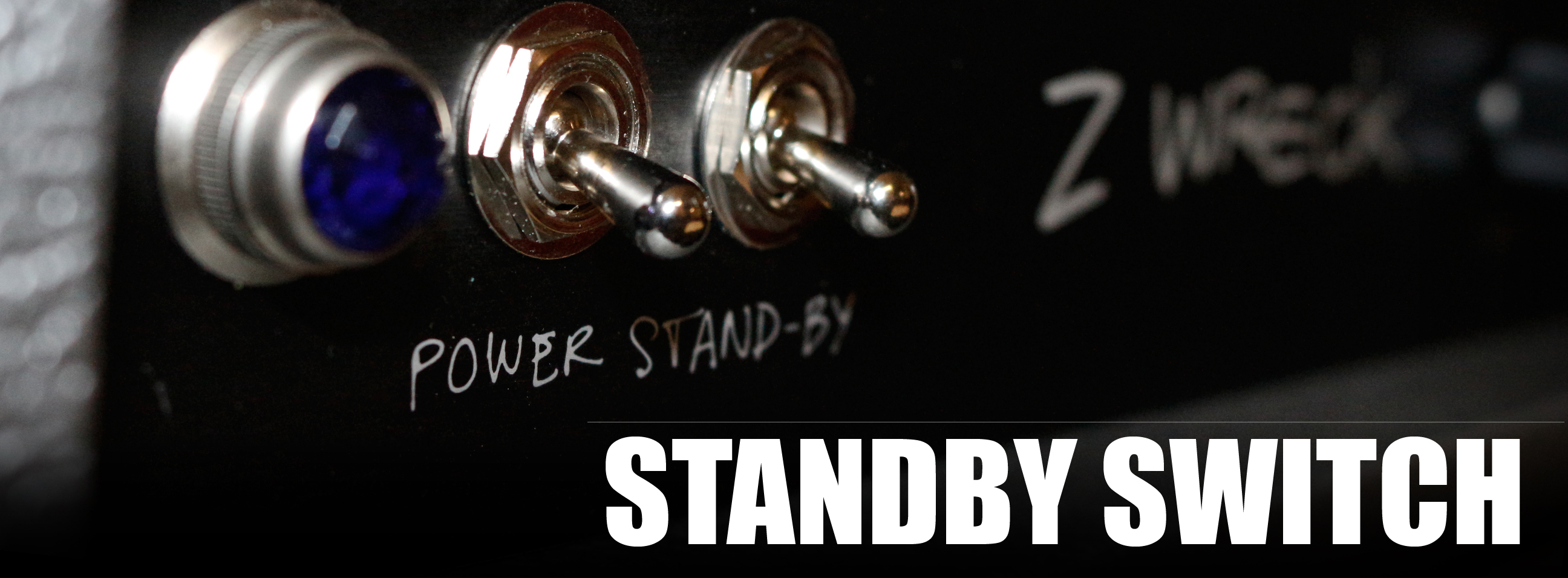
Standby Switch in Tube Guitar Amplifiers
The use and need of a standby switch is an issue that comes up from time to time. Let me say that a standby switch is a convenience supplied to guitar amps. Now not all guitar amps have standby switches. For example, the Carmen Ghia and its directly heated 5Y3 rectifier does not need a standby switch. By the time the 5Y3 conducts high voltage, the tubes are heated and ready to conduct. Extremely high quality tube stereo amps, like those made by McIntosh also don’t have standby switches. Remember that many stereo tube amp connoisseurs and audiophiles use these kinds of amps sans standby switches. I have never read an issue about the lack of standby switches on stereo tube amps.
So why do amps have standby switches? They are installed as a convenience for the operator. When a band would take a break, the standby switch was used as a “mute” switch for the amp. Once the break was over, the amp would be ready to play with the flick of a switch. They are also useful for a technician to engage or disengage the high voltage running through the amp.
A few terms used to scare users into using standby switches:
Cathode Stripping: This term does not apply to the tubes used in guitar amps. This applies to cathode ray tubes, and only under limited applications.
Cathode Poisoning: In my 50 years of dealing with vacuum tubes I have never heard about this phenomenon. Cathodes only conduct electrons when the anode of the circuit has a high voltage potential to attract them. High voltage is present only when the standby switch is in “play mode”.
Here are some simple dos and don’ts when using a standby switch:
- Always use a standby switch when dealing with a solid state rectified amp. The immediate surge of high voltage on a tube isn’t the best for its long-term life.
- Power on your amp, then wait a minute or so and engage standby switch to the run position. This is the proper use of a standby switch.
- Turn standby switch off if you are switching speaker cabs, engaging a half-power or triode/pentode mode on amps with these features.
- Engage standby switch when taking a break, but just power down if you are planning to break for 30 minutes or more.
- When you power down your amp, just turn off power switch and leave standby switch on. This will safely drain high voltage from filter caps for safe transportation.



